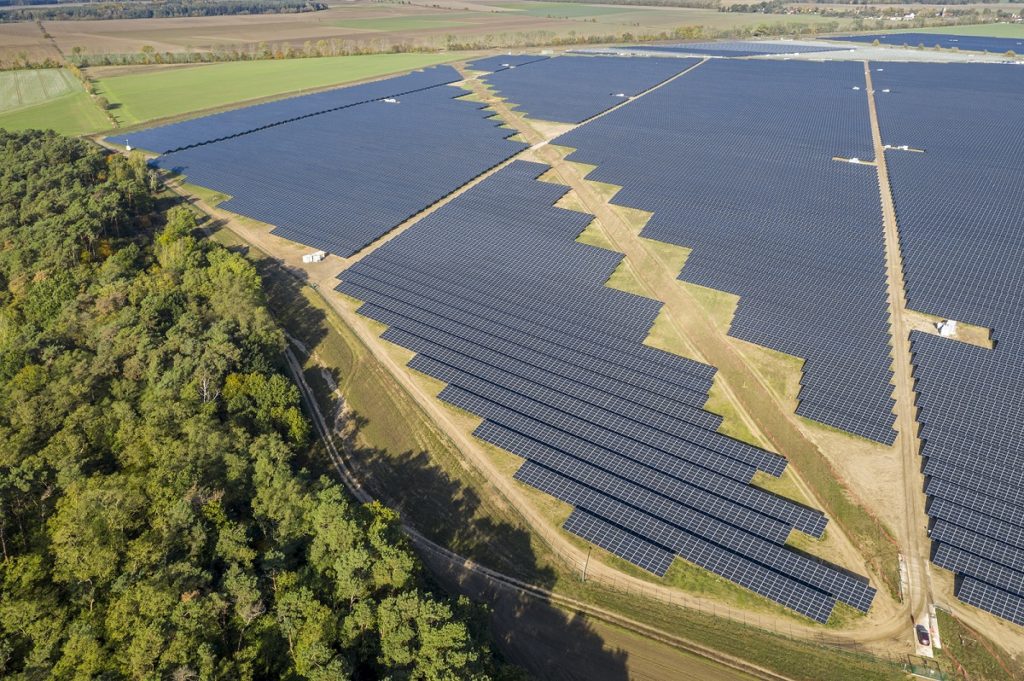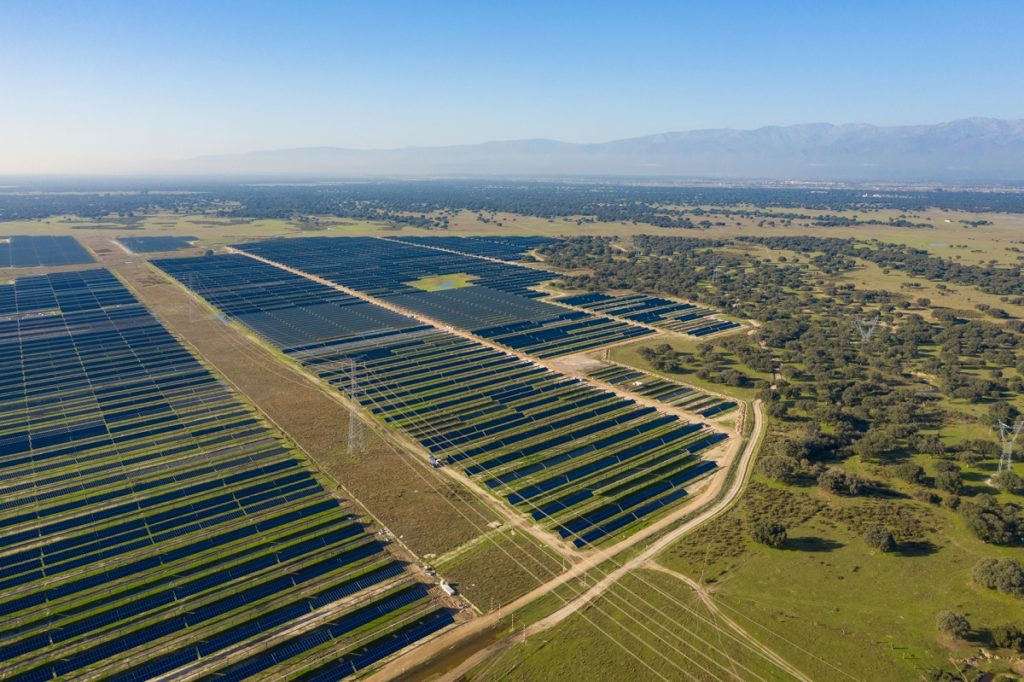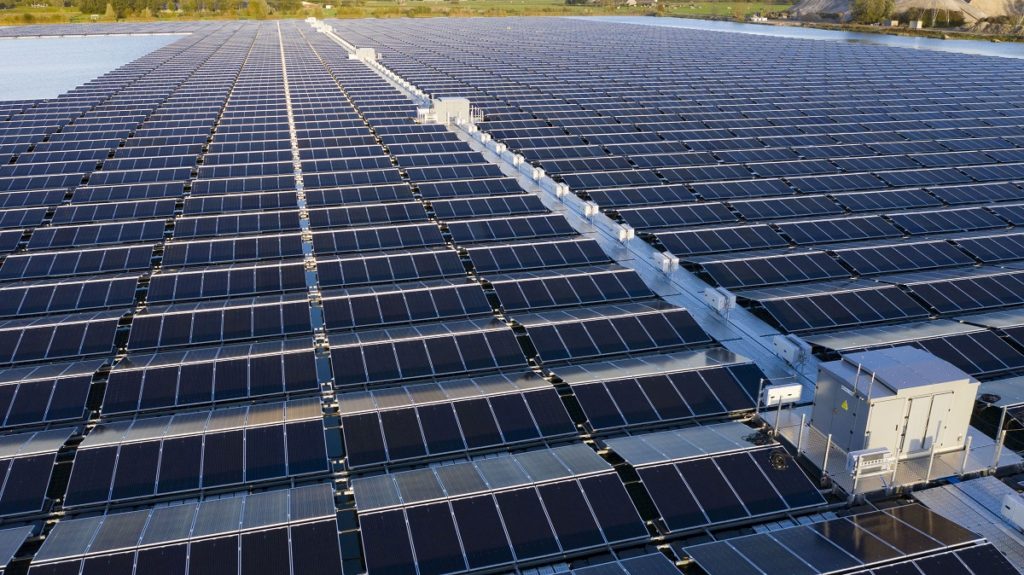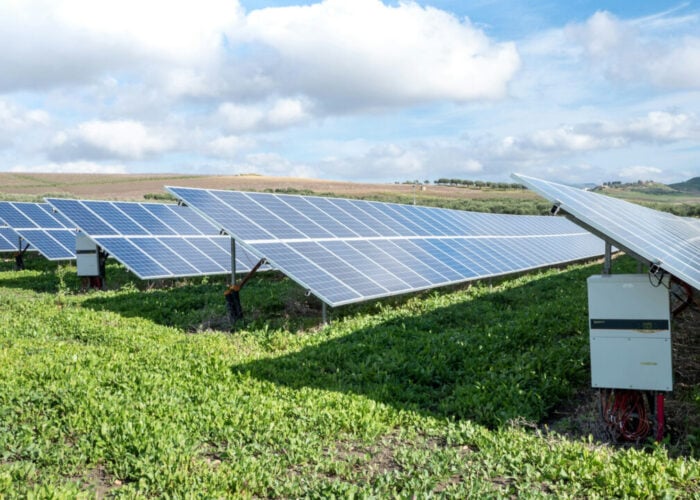
Not only will solar be the dominant source of new power generation in Europe by 2025, cementing its position as the third largest market for solar globally, but the continent has placed the asset class at the very heart of its COVID-19 recovery strategy. As part of a week-long special report on PV Tech Premium, Liam Stoker, Edith Hancock and Jules Scully explore the drivers for solar in Europe, the key markets and the challenges that remain.
Germany
Germany made swift progress last year in spite of COVID-19 disruption. The country’s developers installed 4.8GW of solar PV in 2020, more than any other EU market, with the sector boosted by a tried and tested regulatory scheme as well as attractive feed-in premiums for medium- to large-scale commercial systems, according to SolarPower Europe.
Unlock unlimited access for 12 whole months of distinctive global analysis
Photovoltaics International is now included.
- Regular insight and analysis of the industry’s biggest developments
- In-depth interviews with the industry’s leading figures
- Unlimited digital access to the PV Tech Power journal catalogue
- Unlimited digital access to the Photovoltaics International journal catalogue
- Access to more than 1,000 technical papers
- Discounts on Solar Media’s portfolio of events, in-person and virtual
In July, the German Bundestag increased the expansion target for renewable energies in the electricity sector to 65% by 2030 as part of a series of amendments to its Renewable Energy Act (EEG). The country has now targeted adding 98GW of installed solar by 2030, up from the current level of approximately 54GW.
To achieve this, the coalition government agreed to increase the 2022 PV tender volumes from 1.9GW to 6GW. However, the country’s solar industry association BSW dismissed the announcement, calling for the industry to see it as “a mere electoral manoeuvre”. Carsten Körnig, BSW’s chief executive, tells PV Tech Power that Germany will need to quadruple its installed solar capacity to 200GW by 2030 if it is to meet the European Union’s new climate goals, which includes raising the continent’s emissions reduction target to 55% by the end of the decade. Körnig believes the greatest barrier to hitting that 200GW mark will be addressing tender volumes which he says are limiting the sector. “The greatest challenge will be to raise the tender volumes,” he says. “The growth of ground-mounted PV plants depends largely on the bid volume in the tender scheme, which limits growth possibilities.”
Although it did increase its renewables target in the course of a coal phase-out, Körnig says one of the amendments to the EEG disadvantaged those plants that use some of the power they produce. An amendment focusing on EEG surcharge, where a charge is added to a consumer a corporation’s bills in proportion to their power consumption, deemed that local solar operators will need to pay a proportionate surcharge for solar self-consumption of more than 10MWh and for solar system output over 20KWp. The surcharge will then be due for every kWh of solar power consumed after 20 years of operation.
Although companies’ interest in solar plants is growing, the amendment of the EEG law, which Körnig criticised as a “sun tax” last October, has since worsened the regulatory framework for plants with self-consumption. BSW said last year that the current plans could lead to a slowdown in new installations, as well as many solar systems being prematurely decommissioned.
Nevertheless, there has still been strong growth across the market over the past 12 months. After lawmakers lifted Germany’s 52GW subsidy cap for solar installations, the vast majority of new installed capacity came from systems smaller than 750kWp, which would have been “directly impacted” by the threshold. “Without the removal of the subsidy cap the installation of PV in this market segment would have collapsed,” Körnig said. The residential market, he added, has also seen new growth opportunities driven by an uptick in electric vehicle (EV) owners who prefer charging their battery with low emission energy.
“The growth of ground-mounted PV plants [in Germany] depends largely on the bid volume in the tender scheme, which limits growth possibilities.”
Carsten Körnig
On the monetisation side, although Spain and Italy have historically led European power purchase agreements due to their higher irradiation, Luca Pedretti, the co-founder of software company Pexapark, believes Germany could be “the biggest emerging market” in Europe’s unsubsidised solar space, due to the volume of potential corporate offtakers based in the country. Local utility EnBW is in the process of constructing Germany’s largest unsubsidised solar plant at a capacity of 187MW, and said last year it has multiple options for marketing the electricity. Körnig says the PPA market will grow in the following years, but it will “only cover a small part of the PV installations needed until 2030.”
Domestic manufacturing, on the other hand, will be “very important” to deployment over the coming decade, Körnig says. Swiss company Meyer Burger is so far leading the push in Europe to build out domestic production capabilities. It will open facilities in Bitterfeld-Wolfen and Freiberg, Germany, in late May to begin mass production of its heterojunction (HJ) modules, which will be shipped across Europe and to the US. The manufacturer said in January, after it was awarded €22.5 million in regional German government grants to build HJ PV cell factory there, that it wants to scale up its production capacity to 1.4GW by 2023.

Spain
A new auction mechanism and efforts to tackle grid permitting issues look set to build momentum in Spain’s solar sector, which was last year driven by a booming power purchase agreement (PPA) segment and merchant projects.
Thanks to a commissioning deadline for projects awarded in previous auctions, 2019 saw the country top PV deployment rankings among European markets. This was followed by a 45% reduction last year, when around 2.6GW was installed, the majority of which came from PPA-based systems. As well as being Europe’s largest solar PPA market in 2021, the country is now home to the world’s biggest corporate PPA deal to date, which saw French oil major Total last year acquire a 3.3GW solar pipeline and become the offtaker for 3GW.
In addition to measures to further support the development of PPAs, Spain’s government last year passed legislation that aims to speed up licensing approvals for renewables projects and minimise the reselling of permits following a tsunami of applications in 2019.
According to Pablo Otín, CEO of developer Powertis, the legislative package represents an overhaul in the way Spain will tackle the next wave of renewables: “And it was much needed because it has been a while for the government to put everything in place.” Otín says that while complications can arise when dealing with Spanish local authorities, which “don’t necessarily understand the good of what solar could be for the community or for the country”, Spain’s federal government is on the whole “doing a great job”.
10GW
Solar capacity to be supported by Spain’s auction mechanism by the end of 2025
Part of last year’s overhaul saw the country introduce a new renewables auction mechanism that is expected to support at least 10GW of PV capacity by the end of 2025. The first of the new auctions took place earlier this year, with solar securing two-thirds of the allocated 3GW capacity, and winners required to complete their projects by March 2023.
Given that winning solar bids were made by 26 companies, 70% of which are Spanish, and average winning prices were €24.47/MWh (US$29.38/MWh), results from the first auction have been welcomed by trade association UNEF. “The good results of the renewables auction guarantee its effectiveness and we hope that they will be maintained over time and that they will be similar to the one recently held, which has been very satisfactory,” says José Donoso, director general at UNEF.
The association is calling for future auctions to have 20% of allocated capacity specifically for installations solar smaller than 10MW and is pushing for another to take place for projects with energy storage. According to Donoso, the auctions “are necessary because both PPA and merchant projects are limited when it comes to obtaining financing”.
UNEF believes Spain will be able to beat its target of reaching 39.2GW of installed PV by 2030, by which time the country aims to have 74% renewable energy in electricity generation. The solar industry is also expected be boosted by government plans to grow its green hydrogen sector and reach 4GW of installed electrolysis capacity by the end of the decade. Spanish utilities such as Iberdrola and Naturgy have made notable green hydrogen announcements in recent months, while Endesa is planning 23 green hydrogen projects in the country that will be powered by 2GW of renewables.
Ana Barillas, head of Iberia at consultancy Aurora Energy Research, says that although Spain’s hydrogen market is still in its infancy, the sector “is a real upside” for the development of solar in the country. She adds: “When people think about the risk of deploying solar in the Iberian market, the long-term risk of cannibalisation is an important one. And I think anything that can help support prices in the long term, whether that’s electric vehicles, whether that’s storage or whether that’s green hydrogen, will help the sector invest with a bit more certainty and mitigate some of the long-term risks.”
The Netherlands
The Dutch Cabinet has targeted a 49% reduction in greenhouse gas emissions compared to 1990 levels by 2030, and in correlation to that the Netherlands Environmental Agency expects renewable electricity to grow to 75% of total consumption by 2030.
But the country has struggled to meet targets in the past. The Netherlands’ government was ordered by the supreme court to slash emissions by 25% by the end of 2020 last year, after losing its final appeal in a six-year legal case brought by climate group Urgenda Foundation. It has also struggled to catch up with renewables penetration, generating just 7.4% of its energy from renewable sources at the close of 2018, shy of the 14% it was asked to accomplish by 2020 under European legislation.
Nevertheless, trade body Holland Solar sees solar playing “an enormous role” in the country’s climate targets, according to policy officer Nold Jaeger. The organisation predicts that the Netherlands will host 58GW of solar capacity by 2030, and more than 200GW by 2050.
As of 2019, the Netherlands hosted 6,754MW of solar power capacity, according to the country’s Central Bureau of Statistics. Today, its capacity sits at slightly over 10GW, according to the trade body, with just under 3GW added last year.

Last year, the government awarded more than €2.1 billion in its subsidy scheme, SDE+, to solar projects totalling 3,440MW capacity. The scheme was expanded this year and is now-called SDE++, offering a budget of €5 billion to develop renewables projects from next September.
“Depending on how the different policies the coming years work out will decide what the exact mix between solar and wind energy will be,” he says, “but it is very clear that solar will take up a very significant portion of that 75% renewable energy in 2030.”
While the COVID-19 pandemic did impact the growth of solar power in the commercial and industrial (C&I) space, Jaeger says that residential installations surged last year as consumers “suddenly spent their holiday savings…on solar panels”. Around one million homes were installed with solar, and the Netherlands passed the 10GWp capacity barrier, he says.
The question, Jaeger says, is more now about how solar can be integrated into areas beyond electricity, such as heating, cooling, industry, and mobility to help those carbon-intensive areas go green. “In that sense we foresee a bright future for solar in the Netherlands because of the expected increase in demand for green energy from other sectors.”
“[The solar sector needs to] think more creatively about how to solve these [grid] issues on a local level.”
Clearly, to go from roughly 10GW to 58GW in nine years will require deployment to speed up. The Netherlands faces a handful of challenges to get there, namely the limits of its grid infrastructure. An increasingly large part of the country now qualifies as “filled up”, according to Jaeger, making it much harder for solar developers to gain connection. “This doesn’t mean that the sector will stop growing,” he says, but it does have the effect of requiring those working in the energy sector in the Netherlands to “think more creatively about how to solve these issues on a local level.” The trade body has negotiated with local grid operators to allow solar power developers to connect their plants at 70% of their maximum capacity, which means more installations can gain grid access overall.
The challenges the market faces today, Jaeger says, are grid infrastructure limits, ensuring local support for projects and establishing “a business case that needs to rely less and less on subsidies.” To win over communities, the Holland Solar has launched a code of conduct for ground mounted solar parks in collaboration with several NGOs.
One of the country’s strengths is its suitability for floating solar technology. There have been a few examples of partnerships with sand production lakes, which typically allow developers to install solar on their lakes while they offtake the electricity produced, creating a compelling business case.
With land scarce, rooftops have become a key battleground for Holland Solar, which has been lobbying frequently for the government to invest in strengthening support structures in buildings so they can take the weight of panels. Building regulations in the Netherlands have allowed building developers to build constructions that can bear the weight of a good amount of snow or rain, Jaeger says, “but that simply doesn’t allow for the constant weight of a solar system.” This is especially true of larger flat-roofed commercial buildings, which can become greater platforms for solar installations. “This does require the government to concretely change it policies so that future buildings are all constructed solar proof and that existing buildings can be renovated in such a way that they are able to carry the weight of large solar installations.”







